Stomach Contents Preserve Sinocalliopteryx Snacks
Updated: 2012-08-31 15:38:28
 Rare stomach contents reveal the last meals of two fluffy dinosaur predators
Rare stomach contents reveal the last meals of two fluffy dinosaur predators Rare stomach contents reveal the last meals of two fluffy dinosaur predators
Rare stomach contents reveal the last meals of two fluffy dinosaur predators The Dinosaur Museum News Events In The Dinosaur Museum Paleontology News Discoveries Dinosaur News Museum Home Dinosaur Shop Blog Feed Add To Technorati Dinosaur Categories Dinosaur News Museum Events Uncategorized Recent Posts Early Birds are Food for Dinosaurs Dr Who and Dinosaurs Snakes and Dinosaurs Dino-vandals strike in Canada âMissing Linkâ between Dinosaurs Birds Great Summer Dinosaur Hunt Sauropod Seasonal Migrations Torosaurus or Triceratops Cycads not âLiving Fossilsâ New Archaeopteryx Skeleton Museum Tickets For a chance to save 50p on museum admission , visit the tickets page and click Get a Voucher Dinosaur News Welcome to the dinosaur news blog the most up to date source on palaeonthology and prehistoric creatures . Feel free to join the discussion by adding your
The Dinosaur Museum News Events In The Dinosaur Museum Paleontology News Discoveries Dinosaur News Museum Home Dinosaur Shop Blog Feed Add To Technorati Dinosaur Categories Dinosaur News Museum Events Uncategorized Recent Posts Early Birds are Food for Dinosaurs Dr Who and Dinosaurs Snakes and Dinosaurs Dino-vandals strike in Canada âMissing Linkâ between Dinosaurs Birds Great Summer Dinosaur Hunt Sauropod Seasonal Migrations Torosaurus or Triceratops Cycads not âLiving Fossilsâ New Archaeopteryx Skeleton Museum Tickets For a chance to save 50p on museum admission , visit the tickets page and click Get a Voucher Dinosaur News Welcome to the dinosaur news blog the most up to date source on palaeonthology and prehistoric creatures . Feel free to join the discussion by adding your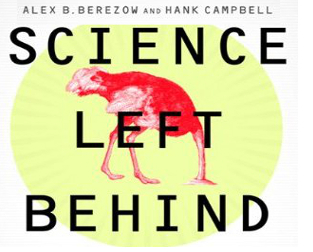 DURHAM, N.C. -- By measuring the unique properties of light on the scale of a single atom, researchers from Duke University and Imperial College, London, believe that they have characterized the limits of metal's ability in devices that enhance light.
This field is known as plasmonics because scientists are trying to take advantage of plasmons, electrons that have been "excited" by light in a phenomenon that produces electromagnetic field enhancement. The enhancement achieved by metals at the nanoscale is significantly higher than that achievable with any other material.read more
DURHAM, N.C. -- By measuring the unique properties of light on the scale of a single atom, researchers from Duke University and Imperial College, London, believe that they have characterized the limits of metal's ability in devices that enhance light.
This field is known as plasmonics because scientists are trying to take advantage of plasmons, electrons that have been "excited" by light in a phenomenon that produces electromagnetic field enhancement. The enhancement achieved by metals at the nanoscale is significantly higher than that achievable with any other material.read more CHESTNUT HILL, MA (Aug. 31, 2012) Viewed as a potential target in the global effort to reduce climate change, atmospheric black carbon particles absorb significantly less sunlight than scientists predicted, raising new questions about the impact of black carbon on atmospheric warming, an international team of researchers, including climate chemists from Boston College, report today in the latest edition of the journal Science.read more
CHESTNUT HILL, MA (Aug. 31, 2012) Viewed as a potential target in the global effort to reduce climate change, atmospheric black carbon particles absorb significantly less sunlight than scientists predicted, raising new questions about the impact of black carbon on atmospheric warming, an international team of researchers, including climate chemists from Boston College, report today in the latest edition of the journal Science.read more CHAMPAIGN, Ill. — Up to 4 percent of the methane on Earth comes from the ocean's oxygen-rich waters, but scientists have been unable to identify the source of this potent greenhouse gas. Now researchers report that they have found the culprit: a bit of "weird chemistry" practiced by the most abundant microbes on the planet.
The findings appear in the journal Science.read more
CHAMPAIGN, Ill. — Up to 4 percent of the methane on Earth comes from the ocean's oxygen-rich waters, but scientists have been unable to identify the source of this potent greenhouse gas. Now researchers report that they have found the culprit: a bit of "weird chemistry" practiced by the most abundant microbes on the planet.
The findings appear in the journal Science.read more Fungi found in plants may not be the answer to mitigating climate change by storing additional carbon in soils as some previously thought, according to an international team of plant biologists.read more
Fungi found in plants may not be the answer to mitigating climate change by storing additional carbon in soils as some previously thought, according to an international team of plant biologists.read more Leipzig. More than 250 international scientists will be meeting in the first week of September in Leipzig to share their experiences on the latest methods and applications using stable isotopes. Stable isotopes are a tool that can be used in a wide range of areas in natural sciences and medicine as, with their help, it is possible to establish the origin of substances, and dynamic processes can be made visible.read more
Leipzig. More than 250 international scientists will be meeting in the first week of September in Leipzig to share their experiences on the latest methods and applications using stable isotopes. Stable isotopes are a tool that can be used in a wide range of areas in natural sciences and medicine as, with their help, it is possible to establish the origin of substances, and dynamic processes can be made visible.read more Boulder, Colorado, USA – In the September issue of GSA TODAY Guillaume Girard and John Stix of McGill University in Montreal join the debate regarding future scenarios of intracaldera volcanism at Yellowstone National Park, USA.read more
Boulder, Colorado, USA – In the September issue of GSA TODAY Guillaume Girard and John Stix of McGill University in Montreal join the debate regarding future scenarios of intracaldera volcanism at Yellowstone National Park, USA.read more read more
read more read more
read more A new study by researchers at Scripps Institution of Oceanography, UC San Diego, suggests that the nature of California heatwaves is changing due to global warming.read more
A new study by researchers at Scripps Institution of Oceanography, UC San Diego, suggests that the nature of California heatwaves is changing due to global warming.read more A study of physics faculty awareness and use of research-based instructional techniques offers greater understanding of what is missing from current education reform efforts
The world has changed dramatically in recent decades but many argue that the university system has not kept pace. As another academic year begins, if you peek into any introductory college science course you're likely to find the same scene as you would have twenty years ago: An instructor writing equations on the blackboard while a lecture hall full of students take notes. read more
A study of physics faculty awareness and use of research-based instructional techniques offers greater understanding of what is missing from current education reform efforts
The world has changed dramatically in recent decades but many argue that the university system has not kept pace. As another academic year begins, if you peek into any introductory college science course you're likely to find the same scene as you would have twenty years ago: An instructor writing equations on the blackboard while a lecture hall full of students take notes. read more Paleo by Jim Lawson was a comic book series set during the Late Cretaceous and featuring dinosaurs as protagonists. It was in print between 2001 and 2004, but is now being "reprinted" as a webcomic. So far, the entirety of the first issue and a portion of the second have been posted. Two new pages are posted every week.Read more about dinosaurs in comics in "Paleo-Path" [previously], adapted from the introduction to a print collection of Paleo.Via Dinosaur Tracking. #187; riginal news
Paleo by Jim Lawson was a comic book series set during the Late Cretaceous and featuring dinosaurs as protagonists. It was in print between 2001 and 2004, but is now being "reprinted" as a webcomic. So far, the entirety of the first issue and a portion of the second have been posted. Two new pages are posted every week.Read more about dinosaurs in comics in "Paleo-Path" [previously], adapted from the introduction to a print collection of Paleo.Via Dinosaur Tracking. #187; riginal news Light changes matter in ways that shape our world. Photons trigger changes in proteins in the eye to enable vision; sunlight splits water into hydrogen and oxygen and creates chemicals through photosynthesis; light causes electrons to flow in the semiconductors that make up solar cells; and new devices for consumers, industry, and medicine operate with photons instead of electrons. But directly measuring how light manipulates matter on the atomic scale has never been possible, until now. read more
Light changes matter in ways that shape our world. Photons trigger changes in proteins in the eye to enable vision; sunlight splits water into hydrogen and oxygen and creates chemicals through photosynthesis; light causes electrons to flow in the semiconductors that make up solar cells; and new devices for consumers, industry, and medicine operate with photons instead of electrons. But directly measuring how light manipulates matter on the atomic scale has never been possible, until now. read more Scientists at Scripps Institution of Oceanography at UC San Diego have come a step closer to deciphering some of the basic mysteries and mechanisms behind earthquakes and how average-sized earthquakes may evolve into massive earthquakes.
In a paper published in the Aug. 30 issue of the journal Nature, Scripps scientists Kevin Brown and Yuri Fialko describe new information gleaned from laboratory experiments mimicking earthquake processes. The researchers discovered how fault zones weaken in select locations shortly after a fault reaches an earthquake tipping point.read more
Scientists at Scripps Institution of Oceanography at UC San Diego have come a step closer to deciphering some of the basic mysteries and mechanisms behind earthquakes and how average-sized earthquakes may evolve into massive earthquakes.
In a paper published in the Aug. 30 issue of the journal Nature, Scripps scientists Kevin Brown and Yuri Fialko describe new information gleaned from laboratory experiments mimicking earthquake processes. The researchers discovered how fault zones weaken in select locations shortly after a fault reaches an earthquake tipping point.read more A University of Central Florida assistant professor has developed a new material using nanotechnology, which could help keep pilots and sensitive equipment safe from destructive lasers.
UCF Assistant Professor Jayan Thomas, in collaboration with Carnegie Mellon University Associate Professor Rongchao Jin chronicle their work in the July issue of the journal Nano Letters. (http://dx.doi.org/10.1021/nl301988v)read more
A University of Central Florida assistant professor has developed a new material using nanotechnology, which could help keep pilots and sensitive equipment safe from destructive lasers.
UCF Assistant Professor Jayan Thomas, in collaboration with Carnegie Mellon University Associate Professor Rongchao Jin chronicle their work in the July issue of the journal Nano Letters. (http://dx.doi.org/10.1021/nl301988v)read more
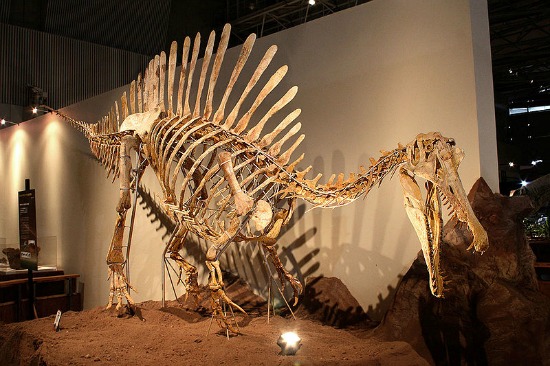 Do dinosaurs such as Spinosaurus and Giraffatitan deserve a name change?
Do dinosaurs such as Spinosaurus and Giraffatitan deserve a name change?  On Aug. 28 at 8:40 a.m. EDT, a visible image of Tropical Storm Isaac taken from NOAA's GOES-13 satellite showed the huge extent of the storm, where the eastern-most clouds lie over the Carolinas and the western-most clouds are brushing east Texas. The image was created by the NASA GOES Project at the NASA Goddard Space Flight Center in Greenbelt, Md. Tropical-storm-force winds extend outward up to 205 miles (335 km) from the center of circulation, making the storm about 410 miles in diameter.read more
On Aug. 28 at 8:40 a.m. EDT, a visible image of Tropical Storm Isaac taken from NOAA's GOES-13 satellite showed the huge extent of the storm, where the eastern-most clouds lie over the Carolinas and the western-most clouds are brushing east Texas. The image was created by the NASA GOES Project at the NASA Goddard Space Flight Center in Greenbelt, Md. Tropical-storm-force winds extend outward up to 205 miles (335 km) from the center of circulation, making the storm about 410 miles in diameter.read more NEW YORK, August 28, 2012 – Researchers at Polytechnic Institute of New York University (NYU-Poly) have created an ultra-sensitive biosensor capable of identifying the smallest single virus particles in solution, an advance that may revolutionize early disease detection in a point-of-care setting and shrink test result wait times from weeks to minutes. read more
NEW YORK, August 28, 2012 – Researchers at Polytechnic Institute of New York University (NYU-Poly) have created an ultra-sensitive biosensor capable of identifying the smallest single virus particles in solution, an advance that may revolutionize early disease detection in a point-of-care setting and shrink test result wait times from weeks to minutes. read more Naval Research Laboratory (NRL) scientist Dr. Michael Stevens is leading an international consortium of scientists in tracking the rapid transport of the exhaust plume from the final launch of the space shuttle in July 2011. The team has found that the plume moved quickly to the Arctic, forming unusually bright polar mesospheric clouds (PMCs) there a day after launch.read more
Naval Research Laboratory (NRL) scientist Dr. Michael Stevens is leading an international consortium of scientists in tracking the rapid transport of the exhaust plume from the final launch of the space shuttle in July 2011. The team has found that the plume moved quickly to the Arctic, forming unusually bright polar mesospheric clouds (PMCs) there a day after launch.read more The extent of the sea ice covering the Arctic Ocean has shrunk. According to scientists from NASA and the NASA-supported National Snow and Ice Data Center (NSIDC) in Boulder, Colo., the amount is the smallest size ever observed in the three decades since consistent satellite observations of the polar cap began.read more
The extent of the sea ice covering the Arctic Ocean has shrunk. According to scientists from NASA and the NASA-supported National Snow and Ice Data Center (NSIDC) in Boulder, Colo., the amount is the smallest size ever observed in the three decades since consistent satellite observations of the polar cap began.read more A U.S. Department of Agriculture (USDA) scientist has found a "green" alternative to a type of fertilizer additive that is believed to contribute to the accumulation of heavy metals in waterways.
Ornamental nursery and floral crops require micronutrients like iron, manganese, copper and zinc. But fertilizers that provide these micronutrients often include synthetically produced compounds that bind with the micronutrients so they are available in the root zone.read more
A U.S. Department of Agriculture (USDA) scientist has found a "green" alternative to a type of fertilizer additive that is believed to contribute to the accumulation of heavy metals in waterways.
Ornamental nursery and floral crops require micronutrients like iron, manganese, copper and zinc. But fertilizers that provide these micronutrients often include synthetically produced compounds that bind with the micronutrients so they are available in the root zone.read more Munich, Germany – August 27 2012: The Japanese earthquake and tsunami of 11 March 2011, which hit the north-east coast of Japan with a magnitude of 9.0 on the Richter scale, was one of the largest ocean-trench earthquakes ever recorded in Japan. The tsunami caused huge damage, including 15,861 dead and 3018 missing persons, and, as of 6 June 2012, 388,783 destroyed homes.read more
Munich, Germany – August 27 2012: The Japanese earthquake and tsunami of 11 March 2011, which hit the north-east coast of Japan with a magnitude of 9.0 on the Richter scale, was one of the largest ocean-trench earthquakes ever recorded in Japan. The tsunami caused huge damage, including 15,861 dead and 3018 missing persons, and, as of 6 June 2012, 388,783 destroyed homes.read more As solitary animals, giant pandas have developed a number of ways to communicate those times when they are ready to come into close contact. One means of this communication occurs through scent marking. A recent study by San Diego Zoo Global researchers, collaborating with researchers at the Institute of Zoology, Chinese Academy of Science, indicates that pandas make clear and specific choices about what trees are used for scent marking. read more
As solitary animals, giant pandas have developed a number of ways to communicate those times when they are ready to come into close contact. One means of this communication occurs through scent marking. A recent study by San Diego Zoo Global researchers, collaborating with researchers at the Institute of Zoology, Chinese Academy of Science, indicates that pandas make clear and specific choices about what trees are used for scent marking. read more EUGENE, Ore. -- (Aug. 27, 2012) -- Refrigerating coal-plant emissions would reduce levels of dangerous chemicals that pour into the air -- including carbon dioxide by more than 90 percent -- at a cost of 25 percent efficiency, according to a simple math-driven formula designed by a team of University of Oregon physicists.
The computations for such a system, prepared on an electronic spreadsheet, appeared in Physical Review E, a journal of the American Physical Society.read more
EUGENE, Ore. -- (Aug. 27, 2012) -- Refrigerating coal-plant emissions would reduce levels of dangerous chemicals that pour into the air -- including carbon dioxide by more than 90 percent -- at a cost of 25 percent efficiency, according to a simple math-driven formula designed by a team of University of Oregon physicists.
The computations for such a system, prepared on an electronic spreadsheet, appeared in Physical Review E, a journal of the American Physical Society.read more read more
read more A superconductor, which can move electrical energy with no wasteful resistance, is the holy grail of cost-effective, efficient, and "green" power production. Unlike traditional conductors such as copper or silver, which waste power resources and lose energy when they heat up, an ideal superconductor would continuously carry electrical current without losing any power. read more
A superconductor, which can move electrical energy with no wasteful resistance, is the holy grail of cost-effective, efficient, and "green" power production. Unlike traditional conductors such as copper or silver, which waste power resources and lose energy when they heat up, an ideal superconductor would continuously carry electrical current without losing any power. read more Methane is an organic carbon compound containing the fundamental building block of nearly all living material: carbon. It provides an important source of energy and nutrients for bacteria. Methane is produced in oxygen-free environments and is found in abundance at the bottom of lakes.read more
Methane is an organic carbon compound containing the fundamental building block of nearly all living material: carbon. It provides an important source of energy and nutrients for bacteria. Methane is produced in oxygen-free environments and is found in abundance at the bottom of lakes.read more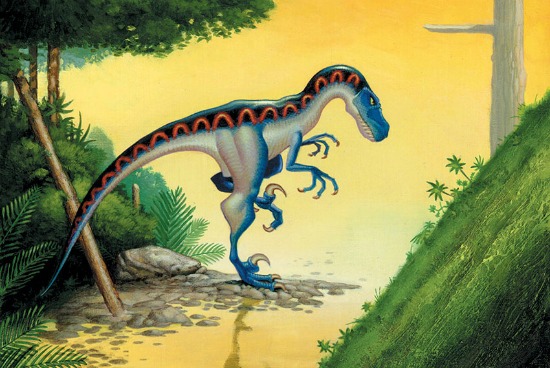 After a long hiatus, the series Paleo returns in webcomic form
After a long hiatus, the series Paleo returns in webcomic form TALLAHASSEE, Fla. - Kevin Speer has a "new paradigm" for describing how the world's oceans circulate — and with it he may help reshape science's understanding of the processes by which wind, water, sunlight and other factors interact and influence the planet's climate.
A Florida State University professor of oceanography with a passion for teaching, Speer and a colleague recently published a significant paper in the respected journal Nature Geoscience.read more
TALLAHASSEE, Fla. - Kevin Speer has a "new paradigm" for describing how the world's oceans circulate — and with it he may help reshape science's understanding of the processes by which wind, water, sunlight and other factors interact and influence the planet's climate.
A Florida State University professor of oceanography with a passion for teaching, Speer and a colleague recently published a significant paper in the respected journal Nature Geoscience.read more Alexandria, VA – Technology is creating a new breed of scientist. I'm talking about citizen scientists – ordinary people and volunteers from all walks of life coming together to help monitor, and possibly mitigate, the next big earthquake through an innovative program called NetQuakes. read more
Alexandria, VA – Technology is creating a new breed of scientist. I'm talking about citizen scientists – ordinary people and volunteers from all walks of life coming together to help monitor, and possibly mitigate, the next big earthquake through an innovative program called NetQuakes. read more A revolutionary tool created by scientists at the University of Sheffield has enabled researchers to analyse nanometer-sized devices without destroying them for the first time, opening the door to a new wave of technologies.
The nuclear magnetic resonance apparatus – developed by the University's Department of Physics and Astronomy – will allow for further developments and new applications for nanotechnology which is increasingly used in harvesting solar energy, computing, communication developments and also in the medical field.read more
A revolutionary tool created by scientists at the University of Sheffield has enabled researchers to analyse nanometer-sized devices without destroying them for the first time, opening the door to a new wave of technologies.
The nuclear magnetic resonance apparatus – developed by the University's Department of Physics and Astronomy – will allow for further developments and new applications for nanotechnology which is increasingly used in harvesting solar energy, computing, communication developments and also in the medical field.read more The Indo-European languages belong to one of the widest spread language families of the world. For the last two millenia, many of these languages have been written, and their history is relatively clear. But controversy remains about the time and place of the origins of the family. New research links the origins of Indo-European with the spread of farming from Anatolia 8,000 to 9,500 years ago. #187; riginal news
The Indo-European languages belong to one of the widest spread language families of the world. For the last two millenia, many of these languages have been written, and their history is relatively clear. But controversy remains about the time and place of the origins of the family. New research links the origins of Indo-European with the spread of farming from Anatolia 8,000 to 9,500 years ago. #187; riginal news Cambridge, Mass. – August 23, 2012 – Applied physicists at the Harvard School of Engineering and Applied Sciences (SEAS) have created an ultrathin, flat lens that focuses light without imparting the distortions of conventional lenses.
At a mere 60 nanometers thick, the flat lens is essentially two-dimensional, yet its focusing power approaches the ultimate physical limit set by the laws of diffraction.read more
Cambridge, Mass. – August 23, 2012 – Applied physicists at the Harvard School of Engineering and Applied Sciences (SEAS) have created an ultrathin, flat lens that focuses light without imparting the distortions of conventional lenses.
At a mere 60 nanometers thick, the flat lens is essentially two-dimensional, yet its focusing power approaches the ultimate physical limit set by the laws of diffraction.read more read more
read more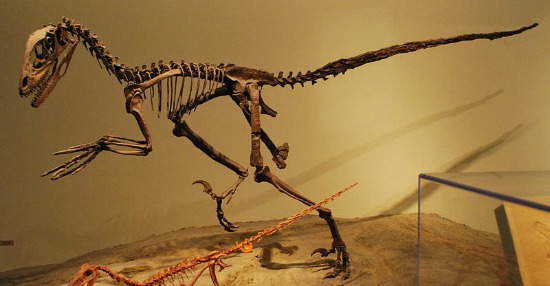 At an Early Cretaceous site in China, paleontologists have discovered a rich trove of raptor tracks
At an Early Cretaceous site in China, paleontologists have discovered a rich trove of raptor tracks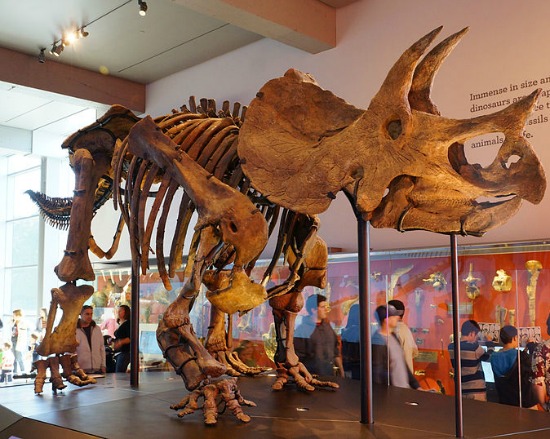 Paleontologists in Canada have just uncovered a rare, especially big Triceratops skeleton
Paleontologists in Canada have just uncovered a rare, especially big Triceratops skeleton Over 110 million years ago, dinosaurs roamed where a major NASA facility now sits
Over 110 million years ago, dinosaurs roamed where a major NASA facility now sits An ancient skull recovered from a cave in the Annamite mountains in northern Laos is the oldest modern human fossil found in Southeast Asia, researchers report. The discovery pushes back the clock on modern human migration through the region by as much as 20,000 years, and indicates that ancient wanderers out of Africa left the coast and inhabited diverse habitats much earlier than previously appreciated. #187; riginal news
An ancient skull recovered from a cave in the Annamite mountains in northern Laos is the oldest modern human fossil found in Southeast Asia, researchers report. The discovery pushes back the clock on modern human migration through the region by as much as 20,000 years, and indicates that ancient wanderers out of Africa left the coast and inhabited diverse habitats much earlier than previously appreciated. #187; riginal news Dome-headed dinosaurs dramatically reshaped their skulls. How does this affect how we count dinosaur species?
Dome-headed dinosaurs dramatically reshaped their skulls. How does this affect how we count dinosaur species?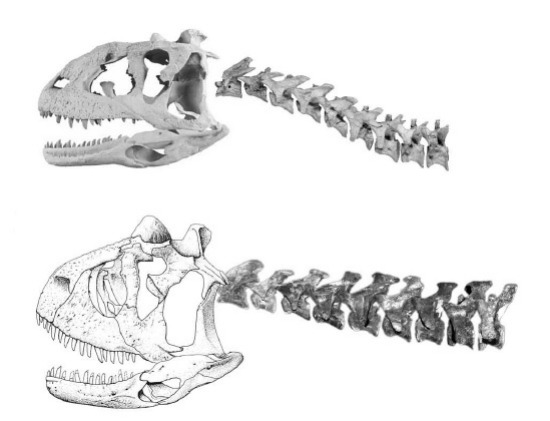 Could the hefty neck of Carnotaurus explain why this dinosaur had puny arms?
Could the hefty neck of Carnotaurus explain why this dinosaur had puny arms? Recently-discovered fossils fill out the arms of one of Australia's formidable predatory dinosaurs
Recently-discovered fossils fill out the arms of one of Australia's formidable predatory dinosaurs Given the predicted rise in global temperatures in the coming decades, climate scientists are particularly interested in warm periods that occurred in the geological past. Knowledge of past episodes of global warmth can be used to better understand the relationship between climate change, variations in atmospheric carbon dioxide and the reaction of Earth's biosphere. Scientists have discovered an intense warming phase around 52 million years ago in drill cores obtained from the seafloor near Antarctica - a region that is especially important in climate research. #187; riginal news
Given the predicted rise in global temperatures in the coming decades, climate scientists are particularly interested in warm periods that occurred in the geological past. Knowledge of past episodes of global warmth can be used to better understand the relationship between climate change, variations in atmospheric carbon dioxide and the reaction of Earth's biosphere. Scientists have discovered an intense warming phase around 52 million years ago in drill cores obtained from the seafloor near Antarctica - a region that is especially important in climate research. #187; riginal news What makes some species more prone to extinction? A new study of nearly 300 species of New Zealand birds -- from pre-human times to the present -- reveals that the keys to survival today differ from those of the past. The results are important for the growing number of studies that try to predict which species could be lost in the future based on what kinds of species are considered most threatened today, the researchers say. #187; riginal news
What makes some species more prone to extinction? A new study of nearly 300 species of New Zealand birds -- from pre-human times to the present -- reveals that the keys to survival today differ from those of the past. The results are important for the growing number of studies that try to predict which species could be lost in the future based on what kinds of species are considered most threatened today, the researchers say. #187; riginal news Geneticists' new finding that a previously unknown archaic species of human mingled with early modern humans in Africa has been met with skepticism because no fossil evidence exists. #187; riginal news
Geneticists' new finding that a previously unknown archaic species of human mingled with early modern humans in Africa has been met with skepticism because no fossil evidence exists. #187; riginal news Chris Stringer answers questions about the evidence of interbreeding between Neanderthals and Homo sapiens and the extinct species of little people nicknamed the hobbits. #187; riginal news
Chris Stringer answers questions about the evidence of interbreeding between Neanderthals and Homo sapiens and the extinct species of little people nicknamed the hobbits. #187; riginal news Until now, the oldest fossil evidence for bilaterians dated back 555 million years. But now scientists have found fossil burrows of a segmented slug that are about 30 million years older. #187; riginal news
Until now, the oldest fossil evidence for bilaterians dated back 555 million years. But now scientists have found fossil burrows of a segmented slug that are about 30 million years older. #187; riginal news